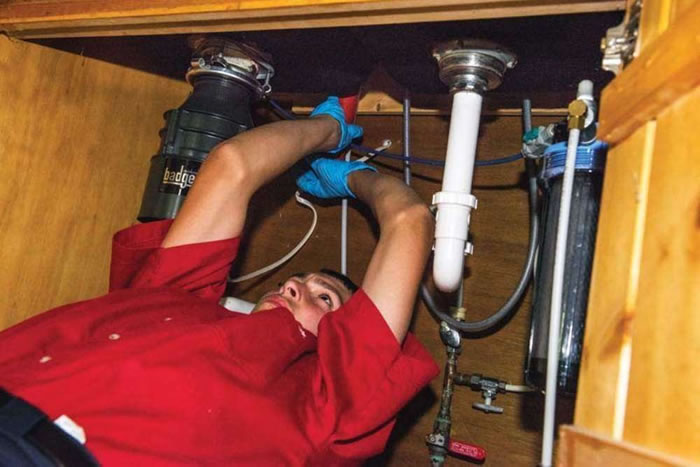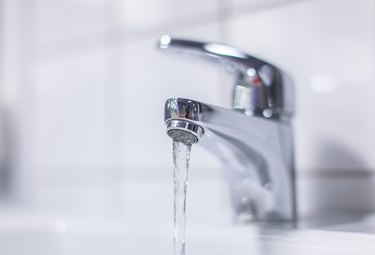Clear Tips for Fixing Low Water Pressure in Your Home
Clear Tips for Fixing Low Water Pressure in Your Home
Blog Article
The content in the next paragraphs pertaining to 4 Ways to Troubleshoot Low Water Pressure is especially intriguing. You should take a peek.

Low water pressure in your home can be a discouraging trouble, impacting whatever from showering to washing dishes. If you're experiencing weak water flow, there are a number of feasible causes and solutions to check out. In this guide, we'll discuss usual factors for low water pressure and useful actions to resolve the issue efficiently.
Introduction to Low Tide Pressure
Low tide stress takes place when the flow of water from your faucets, showers, and various other fixtures is weaker than typical. This can make everyday jobs a lot more tough and less efficient. Recognizing the reasons for low water stress is crucial to finding the ideal option.
Usual Sources Of Low Water Pressure
Pipe Obstructions
With time, pipes can come to be clogged with natural resource, debris, or debris, limiting the circulation of water. This is a common problem in older homes with galvanized steel pipes.
Rust
Corrosion within pipelines can result in leakages and reduced water pressure. Rust build-up can tighten water circulation, specifically in maturing plumbing systems.
Faulty Pressure Regulators
Stress regulatory authorities are in charge of preserving constant water pressure in your house. If they malfunction, it can cause low tide stress or uneven flow throughout your house.
Local Water Supply Issues
In some cases, the trouble exists outside your home. Community supply of water issues, such as main line leaks or maintenance job, can temporarily decrease water pressure in your area.
How to Identify Low Water Stress
Examining Taps and Fixtures
Start by checking the water pressure at different faucets and components throughout your home. If the problem is separated to details locations, it may show localized problems.
Checking Pipelines
Evaluate visible pipelines for indications of leaks, deterioration, or obstructions. Pay attention to any unusual audios, such as banging or rattling pipelines, which could indicate concerns within the plumbing system.
Consulting with a Plumber
If you're unable to pinpoint the reason for low water stress, consider hiring a professional plumber to conduct a thorough evaluation. They can recognize underlying concerns and recommend proper solutions.
Do It Yourself Solutions to Take Care Of Low Tide Stress
Cleansing Aerators and Showerheads
Natural resources can gather in aerators and showerheads, minimizing water circulation. Eliminate and clean these components frequently to improve water stress.
Flushing Hot Water Heater
Sediment buildup in the hot water heater can limit flow and lower effectiveness. Purging the container regularly assists eliminate sediment and keep optimal efficiency.
Examining Pressure Regulator
Make sure that the pressure regulatory authority is operating correctly. Changing or replacing the regulatory authority can aid recover correct water pressure throughout your home.
Clearing Up Clogs in Water Lines
For small blockages, attempt utilizing a plumbing serpent or chemical drain cleaner to clear blockages in pipes. Be cautious when using chemicals and follow security guidelines.
When to Call an Expert Plumber
If do it yourself initiatives fall short to fix the problem or if you think significant plumbing problems, it's ideal to seek support from a qualified plumber. They have the knowledge and tools to deal with intricate concerns securely and effectively.
Preventive Measures to Preserve Water Stress
Normal Upkeep
Set up regular upkeep for your plumbing system to prevent issues such as rust, leakages, and blockages. Addressing minor problems early can help avoid even more considerable repair work in the future.
Installing a Pressure Booster
Take into consideration setting up a pressure booster pump to boost water pressure in locations with continually reduced flow. This can be especially advantageous for multi-story homes or properties with high-demand components.
Tracking Water Usage
Bear in mind water usage routines and avoid overtaxing the plumbing system. Easy adjustments, such as shocking showers and washing tons, can aid maintain adequate water pressure.
Final thought
Handling low water stress can be discouraging, however determining the underlying reasons and executing appropriate solutions can recover optimum flow throughout your home. Whether it's cleaning aerators, evaluating pipes, or speaking with a plumber, taking aggressive actions can make sure a steady supply of water for your day-to-day requirements.
FOUR WAYS TO FIX LOW WATER PRESSURE NOW
Turning on a shower or faucet only to find the water comes out in a sad, slow drizzle is never a good feeling. How exactly are you supposed to wash a pan or take a quick shower when it takes 10 minutes just to rinse off a little soap? The good news is that when your water pressure is bad, there's always a cause: typically one that can be easily fixed. Here are some of the most common causes of low pressure and what you can do to fix the issue:
DEBRIS AND MINERAL DEPOSIT BUILDUPS
If you notice low water pressure from just one or two of the fixtures in your house, the problem likely has to do with debris buildup. Water is full of minerals and other debris, all of which can accumulate in your pipes and on your fixtures. This can cause a blockage that affects how much water flows through. To fix this, try filling a small plastic bag with white vinegar, and use a rubber band to hang it around your showerhead or faucet. Let the head of the fixture soak for a few hours, and the vinegar should loosen the deposits.
WATER LEAKS
Leaks are another common cause of low water pressure. If water is flowing out of your plumbing through a hole or crack before it can reach your fixture, the pressure coming out of the faucet or showerhead will be lower. A plumbing professional is your best bet for finding and repairing a leak in your water supply pipes.
Leaks are another common cause of low water pressure. If water is flowing out of your plumbing through a hole or crack before it can reach your fixture, the pressure coming out of the faucet or showerhead will be lower. A plumbing professional is your best bet for finding and repairing a leak in your water supply pipes.
FOUR WAYS TO FIX LOW WATER PRESSURE NOW
Turning on a shower or faucet only to find the water comes out in a sad, slow drizzle is never a good feeling. How exactly are you supposed to wash a pan or take a quick shower when it takes 10 minutes just to rinse off a little soap? The good news is that when your water pressure is bad, there's always a cause: typically one that can be easily fixed. Here are some of the most common causes of low pressure and what you can do to fix the issue:
DEBRIS AND MINERAL DEPOSIT BUILDUPS
If you notice low water pressure from just one or two of the fixtures in your house, the problem likely has to do with debris buildup. Water is full of minerals and other debris, all of which can accumulate in your pipes and on your fixtures. This can cause a blockage that affects how much water flows through. To fix this, try filling a small plastic bag with white vinegar, and use a rubber band to hang it around your showerhead or faucet. Let the head of the fixture soak for a few hours, and the vinegar should loosen the deposits.
WATER LEAKS
Leaks are another common cause of low water pressure. If water is flowing out of your plumbing through a hole or crack before it can reach your fixture, the pressure coming out of the faucet or showerhead will be lower. A plumbing professional is your best bet for finding and repairing a leak in your water supply pipes.
Leaks are another common cause of low water pressure. If water is flowing out of your plumbing through a hole or crack before it can reach your fixture, the pressure coming out of the faucet or showerhead will be lower. A plumbing professional is your best bet for finding and repairing a leak in your water supply pipes.
A VALVE ISSUE
If you have low water pressure throughout your home, check your main shut-off valve to make sure it's completely open. You may also want to see if there's a pressure-reducing valve installed. If there is, have a plumber help you adjust the settings to get the pressure you're looking for.
OTHERS USING WATER
Believe it or not, your low water pressure could be caused by your neighbors. If you notice low pressure at certain times of day, it may be because you and the people living next to you have similar schedules - when everyone is showering at the same time, the pressure will be lower in every home. Low pressure throughout the neighborhood may also be caused by an issue with your municipal water supply. If that's the case, call the supplier to see if they're working on the issue.
https://www.rotorooter.com/blog/water-leaking/low-water-pressure-fixes/

I'm just very enthusiastic about 4 Ways to Troubleshoot Low Water Pressure and I hope you appreciated the entire article. Are you aware of another individual who is truly interested in the subject? Feel free to promote it. I am grateful for your time. Kindly stop by our website back soon.
Schedule Appointment Now Report this page